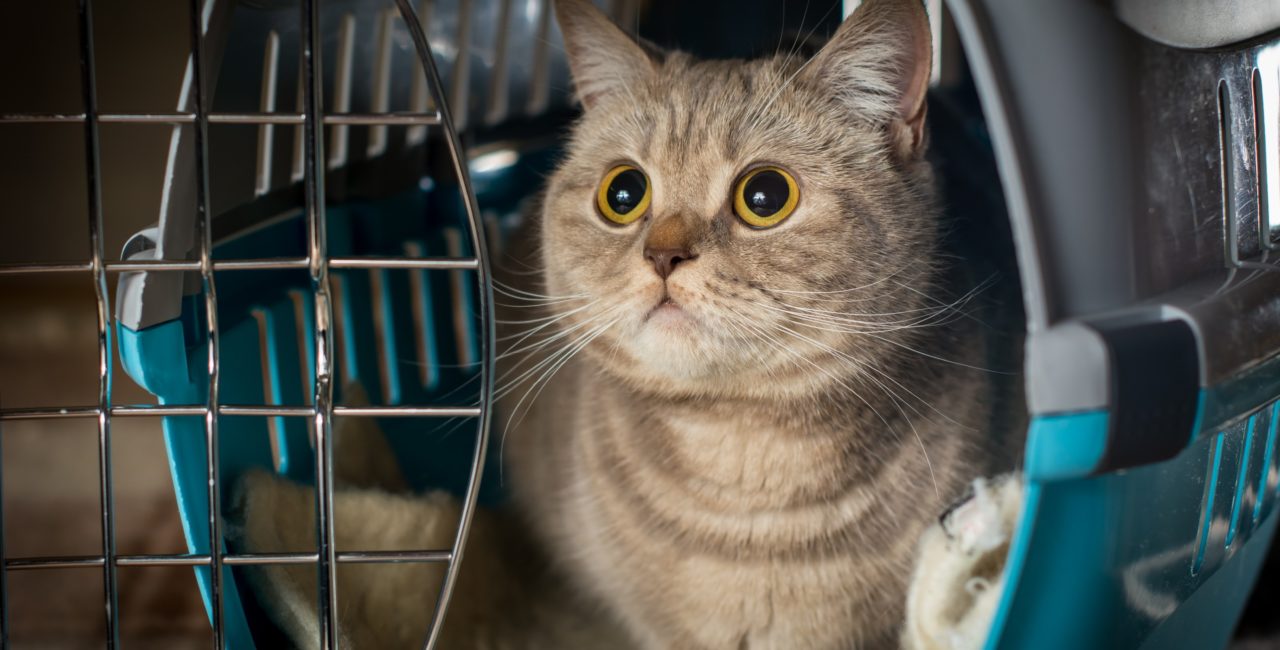A study done in 2014 showed that 37% of Canadians own one or more cats, and 32% owned dogs (Canadian Pet Market Outlook, 2014). That means there are roughly 7.9 million cats in Canada!
These numbers do not reflect the number of cats that veterinary clinics are seeing compared to dogs. Cats certainly deserve the same preventative health care that dogs do, allowing them to live longer and more comfortable lives. So why aren’t we seeing them as much?
A big reason that cat owners don’t want to bring their cats to the vet is the stress that it causes the cat. Some clinics out there (Mission Ridge included) now partake in the Cat Friendly Practice program, taking steps to reduce the anxiety that cats (and subsequently their owners) experience when taken out of their familiar environment and brought to a strange place. The stress, however, usually starts before the cat even arrives at the clinic.
Why do they hate it?
Before dealing with your cat’s nerves, it’s important to realise why your cat behaves the way they do. We have to know that cats can’t be treated like small dogs, and we should respect how they handle different situations.
- Cats like routine. They like to be familiar with what is happening. We have to respect that they need time to become familiar with new situations and new people.
- Cats can sense our anxiety and frustration, so we need to do our best to stay calm when getting ready to take them to the vet.
- Cats respond to encouragement and rewards, not punishment or force. Try your best to make new situations a good thing for them. For example, try using treats when they are in a kennel.
So, how can YOU help to decrease your cat’s nervousness?
The Safe Zone
You may notice that your cat resists being placed in a kennel at home, but is more than happy to get back in there after a visit to the veterinarian! That is because the kennel is seen as a safe place to hide, a link to what is familiar. At home, the kennel is seen as a link to unpleasant experiences. The trick is to have your cat associate it with positive experiences.
- Leave their carrier in a room where your cat often is. It becomes a familiar presence and less of a threat (you also avoid your cat hiding when you pull the kennel out of the closet the day you need to go to the vet)
- Put their favourite blanket or mat in the kennel to make it more familiar. You can place treats/catnip/toys inside to encourage your cat to enter it at home.
- It can take weeks for your cat to warm up to the carrier. Don’t obsess over it, but reward desired behaviour.
Travelling in Style
There are many different types of carriers out there. While you may want your cat to be trendy during travel, there are some important structural components to consider. The best carriers are hard ones that open from the front. Some also open from the top optionally. Often, cats are not interested in coming out of the kennel once arriving at the clinic, so it is important to have a kennel with an easily removable top. This way your cat does not have to be pulled or dumped out, which is not a pleasant experience for them. Exams can usually be performed with the cat sitting in the bottom of the kennel, giving them a better feeling of security. Make sure the carrier is easy for you to carry as well, making it a smoother ride for your feline friend. Some cats do better with a towel over the carrier to block out the unfamiliar sites and noise, while some are more curious. Every cat is different, so try different things to see how yours responds.
Time Crunch
While all of the above is great advice, sometimes you need to get your cat in right away before they have become accustomed to the carrier. Illness and injury don’t have calendars after all! These tips may be helpful:
- Put the carrier in a small room with few places to hide (bathroom?) Bring your cat into the room and close the door, moving calmly and quietly. Try not to chase your cat down. Encourage them with treats or toys to simply walk into the carrier.
- If this doesn’t work, a carrier that opens at the top becomes handy. Gently lower them into the carrier. It is helpful to hold the front legs in one hand and the hind legs in the other hand. This prevents the cat from spreading their limbs as wide as possible to resist being placed into the carrier. It might also help to remove the top completely, put the cat in the bottom half, and reassemble.
- Again, use familiar bedding in the carrier. You can also try a synthetic feline facial pheromone spray, such as Feliway, to help elicit calming vibes.
Hopefully, better understanding your cat, and what helps them feel more secure will lead to smoother visits at the vet. If the stress of transport is reduced, we can avoid greater stress once they arrive at the clinic.
Happy Travels!
Written by Michelle Stoyko, RVT



